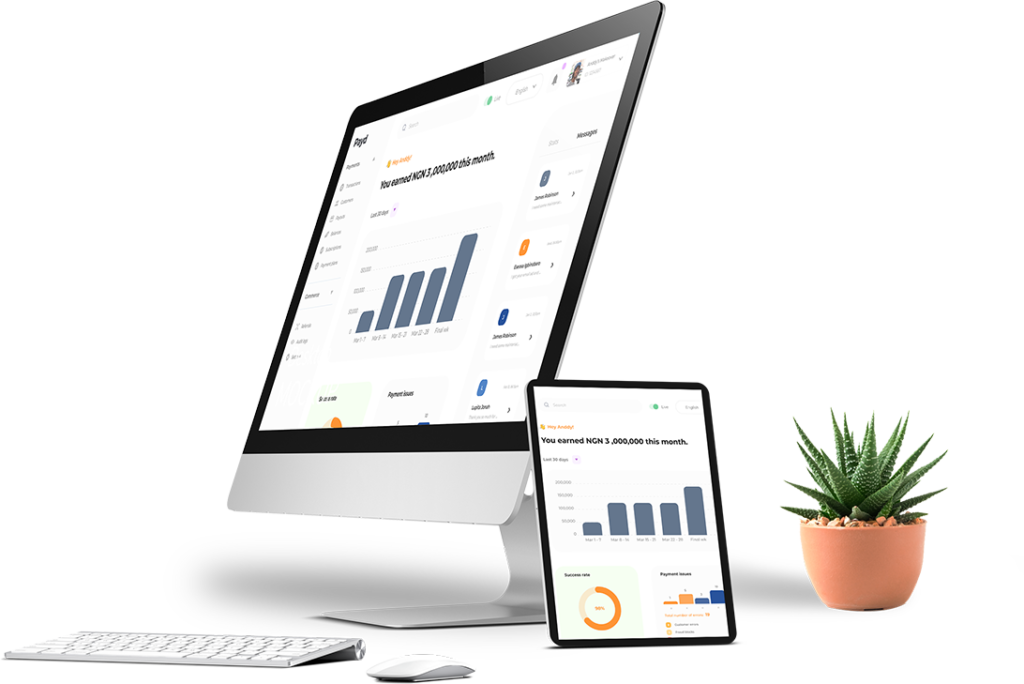With the help of servermanagers, you can get an easy-to-operate and cost-effective desktop virtualization solution that is tailored to your needs.
Servermanagers have a wide range of experience in this market and they are able to deliver high quality services at competitive prices. If you are looking for a Virtual Desktop Infrastructure (VDI) solution, then this company will be the perfect fit for you. Serversmanagers is a Desktop Virtualization service provider offering expertise on market-leading platforms. We specialize in delivering the best of both worlds: cost savings and high performance. Desktop Virtualization is a technology that has been around for years before the advent of cloud computing. It has evolved over the years and now includes virtual desktops, remote desktops, PC as a Service (PCaaS) and much more. Servermanagers deliver Desktop Virtualization solutions with its expertise on market-leading platforms from VMware and Citrix.

Desktop virtualization services
Servermanagers is a technology company that has the expertise to deliver Desktop Virtualization solutions in Nigeria. Desktop virtualization service providers’ role is to provide their customers with an efficient way of managing a desktop environment by taking over the hardware and OS maintenance. Servermanagers provides end-to-end desktop virtualization services which includes hardware acquisition and device management, desktop infrastructure management, application virtualization and server-based computing.
- Application Virtualization
- Desktop Virtualization
- Hardware Virtualization
- Network Virtualization
- Operating System (OS) Virtualization
- Server Virtualization


Desktop Virtualization
If one is not quite sure of the benefits virtual desktops has to offer, then you are in the right place. Servermanagers deliver Desktop Virtualization solutions with its expertise on market-leading platforms like Microsoft and Citrix. Their team of experts have the technical capacity to conduct exhaustive analysis and provide strategic solutions that will best align your business needs with global trends.
- Advance Advisory Team
- Professional Consulting Services
- 24/7 Support Help Center
- Customer Service & Operations
24/7 Support
Express Service
What is Desktop Virtualization?
Desktop virtualization is a method of simulating a user workstation so it can be accessed from a remotely connected device. By abstracting the user desktop in this way, organizations can allow users to work from virtually anywhere with a network connecting, using any desktop laptop, tablet, or smartphone to access enterprise resources without regard to the device or operating system employed by the remote user.
Remote desktop virtualization is also a key component of digital workspaces Virtual desktop workloads run on desktop virtualization servers which typically execute on virtual machines (VMs) either at on-premises data centers or in the public cloud.
Since the user devices is basically a display, keyboard, and mouse, a lost or stolen device presents a reduced risk to the organization. All user data and programs exist in the desktop virtualization server, not on client devices.

Zero Trust Security for Horizon Virtual Desktops and Apps

Provide Continuity for Remote Workers at Scale
What are the benefits of Desktop Virtualization?
- Resource Utilization: Since IT resources for desktop virtualization are concentrated in a data center, resources are pooled for efficiency. The need to push OS and application updates to end-user devices is eliminated, and virtually any desktop, laptop, tablet, or smartphone can be used to access virtualized desktop applications. IT organizations can thus deploy less powerful and less expensive client devices since they are basically only used for input and output.
- Remote Workforce Enablement: Since each virtual desktop resides in central servers, new user desktops can be provisioned in minutes and become instantly available for new users to access. Additionally IT support resources can focus on issues on the virtualization servers with little regard to the actual end-user device being used to access the virtual desktop. Finally, since all applications are served to the client over a network, users have the ability to access their business applications virtually anywhere there is internet connectivity. If a user leaves the organization, the resources that were used for their virtual desktop can then be returned to centrally pooled infrastructure.
- Security: IT professionals rate security as their biggest challenge year after year. By removing OS and application concerns from user devices, desktop virtualization enables centralized security control, with hardware security needs limited to virtualization servers, and an emphasis on identity and access management with role-based permissions that limit users only to those applications and data they are authorized to access. Additionally, if an employee leaves an organization there is no need to remove applications and data from user devices; any data on the user device is ephemeral by design and does not persist when a virtual desktop session ends.
How does Desktop Virtualization work?
Remote desktop virtualization is typically based on a client/server model, where the organization’s chosen operating system and applications run on a server located either in the cloud or in a data center. In this model all interactions with users occur on a local device of the user’s choosing, reminiscent of the so-called ‘dumb’ terminals popular on mainframes and early Unix systems.
What are the types of Desktop Virtualization?
The three most popular types of desktop virtualization are Virtual desktop infrastructure (VDI), Remote desktop services (RDS), and Desktop-as-a-Service (DaaS).
VDI simulates the familiar desktop computing model as virtual desktop sessions that run on VMs either in on-premises data center or in the cloud. Organizations who adopt this model manage the desktop virtualization server as they would any other application server on-premises. Since all end-user computing is moved from users back into the data center, the initial deployment of servers to run VDI sessions can be a considerable investment, tempered by eliminating the need to constantly refresh end-user devices.
RDS is often used where a limited number of applications need be virtualized, rather than a full Windows, Mac, or Linux desktop. In this model applications are streamed to the local device which runs its own OS. Because only applications are virtualized RDS systems can offer a higher density of users per VM.
DaaS shifts the burden of providing desktop virtualization to service providers, which greatly alleviates the IT burden in providing virtual desktops. Organizations that wish to move IT expenses from capital expense to operational expenses will appreciate the predictable monthly costs that DaaS providers base their business model on.
Desktop Virtualization vs. Server Virtualization
In server virtualization, a server OS and its applications are abstracted into a VM from the underlying hardware by a hypervisor. Multiple VMs can run on a single server, each with its own server OS, applications, and all the application dependencies required to execute as if it were running on bare metal.
Desktop virtualization abstracts client software (OS and applications) from a physical thin client which connects to applications and data remotely, typically via the internet. This abstraction enables users to utilize any number of devices to access their virtual desktop. Desktop virtualization can greatly increase an organization’s need for bandwidth, depending on the number of concurrent users during peak.
Desktop Virtualization vs. App Virtualization
What are the benefits of Desktop Virtualization?
- Resource Utilization: Since IT resources for desktop virtualization are concentrated in a data center, resources are pooled for efficiency. The need to push OS and application updates to end-user devices is eliminated, and virtually any desktop, laptop, tablet, or smartphone can be used to access virtualized desktop applications. IT organizations can thus deploy less powerful and less expensive client devices since they are basically only used for input and output.
- Remote Workforce Enablement: Since each virtual desktop resides in central servers, new user desktops can be provisioned in minutes and become instantly available for new users to access. Additionally IT support resources can focus on issues on the virtualization servers with little regard to the actual end-user device being used to access the virtual desktop. Finally, since all applications are served to the client over a network, users have the ability to access their business applications virtually anywhere there is internet connectivity. If a user leaves the organization, the resources that were used for their virtual desktop can then be returned to centrally pooled infrastructure.
- Security: IT professionals rate security as their biggest challenge year after year. By removing OS and application concerns from user devices, desktop virtualization enables centralized security control, with hardware security needs limited to virtualization servers, and an emphasis on identity and access management with role-based permissions that limit users only to those applications and data they are authorized to access. Additionally, if an employee leaves an organization there is no need to remove applications and data from user devices; any data on the user device is ephemeral by design and does not persist when a virtual desktop session ends.
Benefits of our virtualization services
Servermanagers Virtualization Services
We provide cutting-edge consulting services to companies, based out of Nigeria, in order to help them with their productivity levels – as well as reduce their IT infrastructure costs. Virtualization is key in this process; it helps companies keep tabs on the workloads they have while still being able to reduce expenses that are associated with it.
We deliver end-to-end solutions with its expertise on market-leading platforms such as VMware, proxmox. With proven excellence, we can help organizations in switching over to a virtualized IT environment and meet the demand for more efficient IT operations.
Our range of virtualization Services includes:
- Application Virtualization: Here, the applications get virtualized and are streamed from a server to the end user’s device.
- Desktop Virtualization: It is a digital operating system that separates a user’s desktop environment from the physical hardware. It is mostly used in data centers, where separate personalized images for each user are hosted on a physical server.
- Hardware Virtualization: This refers to the creation of virtual (as opposed to concrete) versions of computers and operating systems. It aims to run different operating systems on the same hardware and lets more than one user to use the processor simultaneously.
- Network Virtualization: This refers to the creation of virtual (versus concrete) versions of computers and operating systems. This allows multiple people to use a single CPU simultaneously, as well as let someone else run a different operating system than the main one.pendent channels, each of which can be assigned or reassigned to a particular server or device in real time.
- Operating System (OS) Virtualization: It enables organizations to have a single server that can run multiple OS’ instead of having a dedicated server for each OS.
- Server Virtualization: It is a method of partitioning one physical server into numerous virtual servers, each of which run its own operating system, applications and functions as an independent server.
- Storage Virtualization: It is the process of grouping physical storage from multiple network storage devices so that it performs as if it is on one storage device.
Features of our Virtualization Services in Nigeria
servermanagers offers customized IT Virtualization consulting solutions that are perfectly in sync with the business needs of customers. Our domain experts will help you in deriving the benefits of virtualization for all mission-critical business applications, such as for your datacenter automation, system monitoring and applications testing.
- Improved agility: Our services enable the accelerated virtualization of critical business applications in addition to improving storage I/O performance.
- Boosted productivity: We are focused on simplifying storage management and hardware consolidation to ensure higher productivity.
- Advanced resource optimization: We ensure advanced levels of resource optimization by combing the available resources and dividing the available bandwidth into independent channels.
- Backup Support and Disaster Recovery: The foolproof backup and disaster recovery plan ensures proper management and storage of the critical customer data.
Our Strategy
servermanagers adopts a four-phase strategy for its IT Virtualization services as follows:
- Analysis and Assessment: After a detailed review of the customer’s IT environment, we provide an estimate of the total cost of ownership for the infrastructure as well as the setup expense.
- Design: In this phase, we create a detailed project plan and detail the strategy to be adopted for the virtualization of servers.
- Deployment: Our team of experts works with customers in the authentication, configuration and deployment of a new infrastructure that meets the performance requirements.
- Support: We offer multiple levels of support technologies and work with the customers in determining the ideal support level for their workforce and capabilities.
Our Trusted Clients



